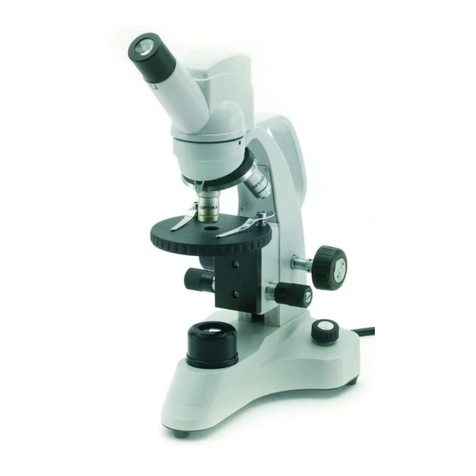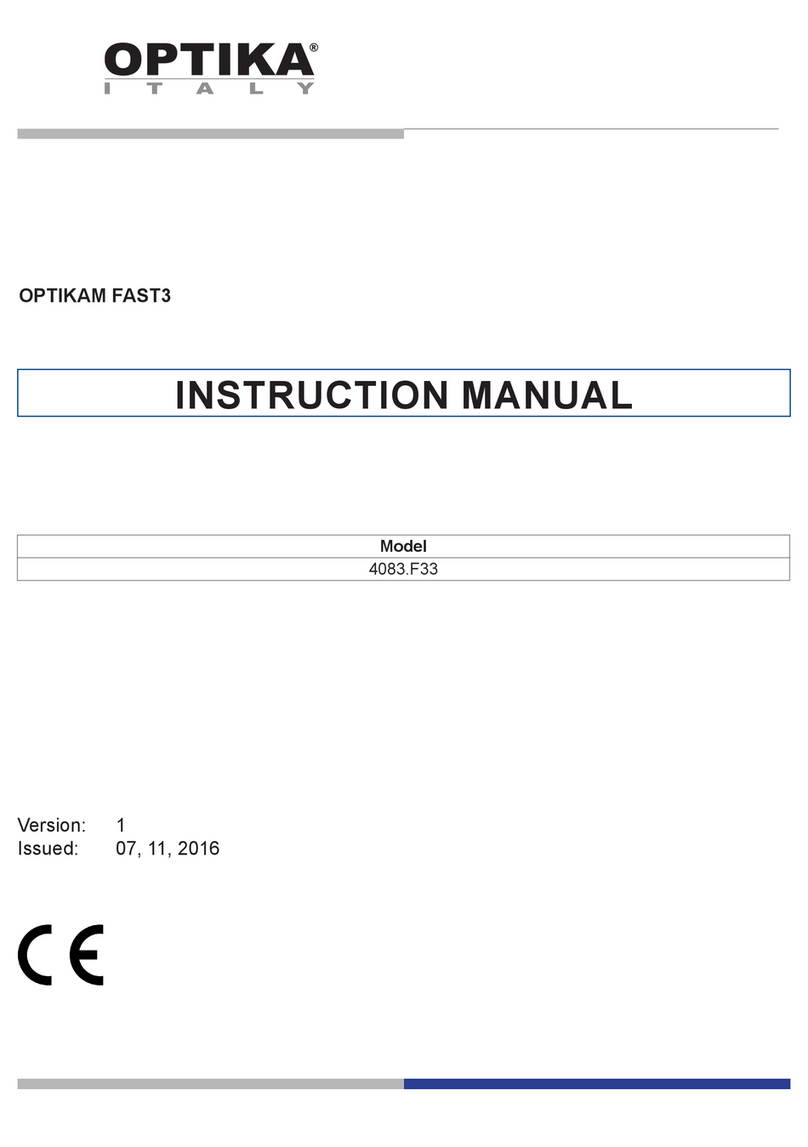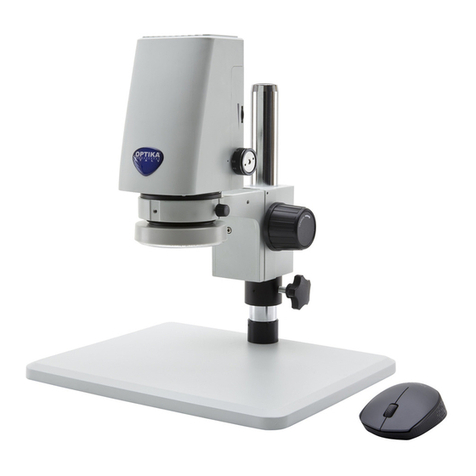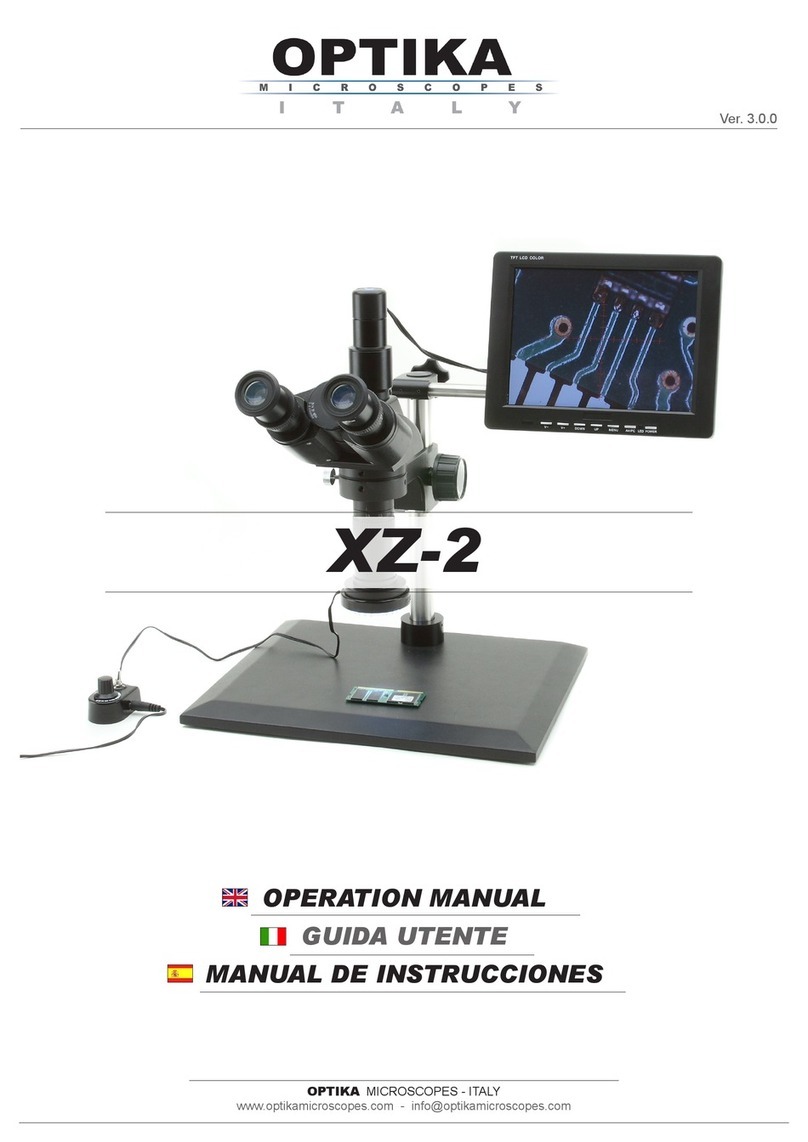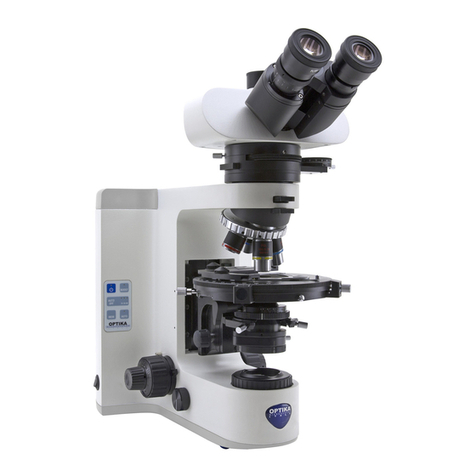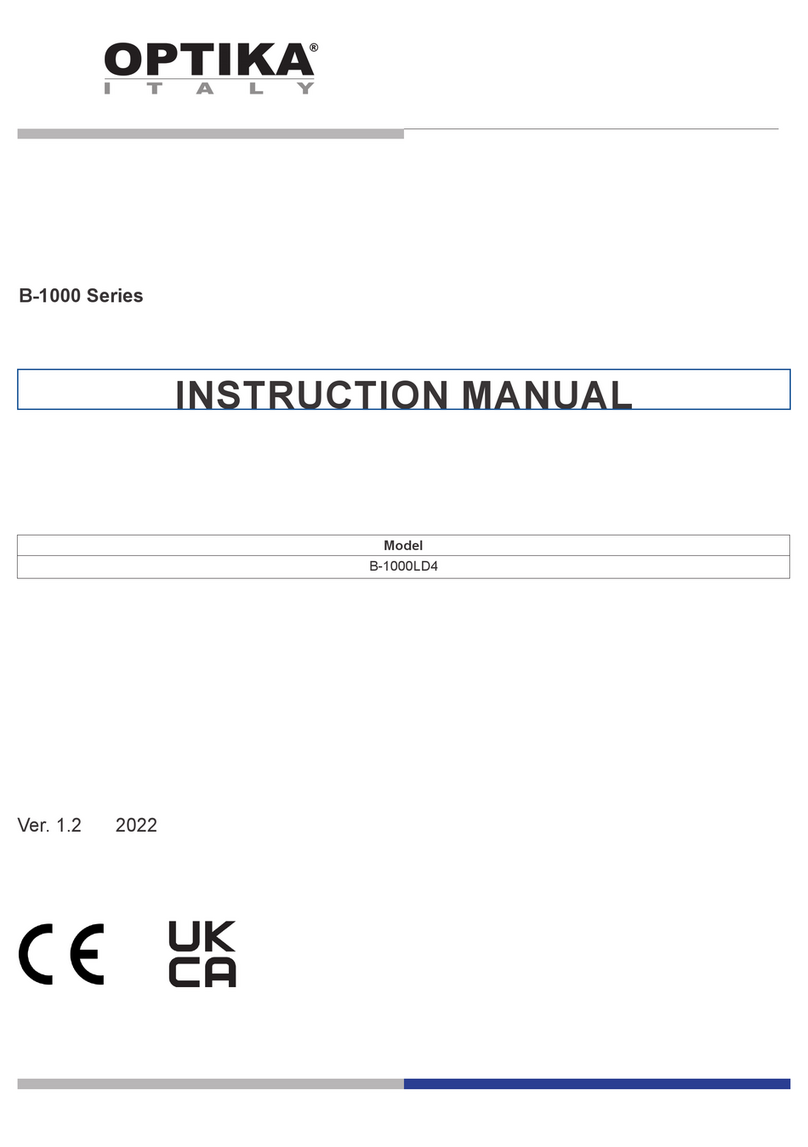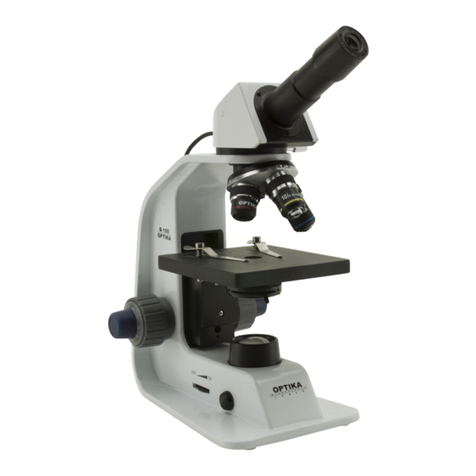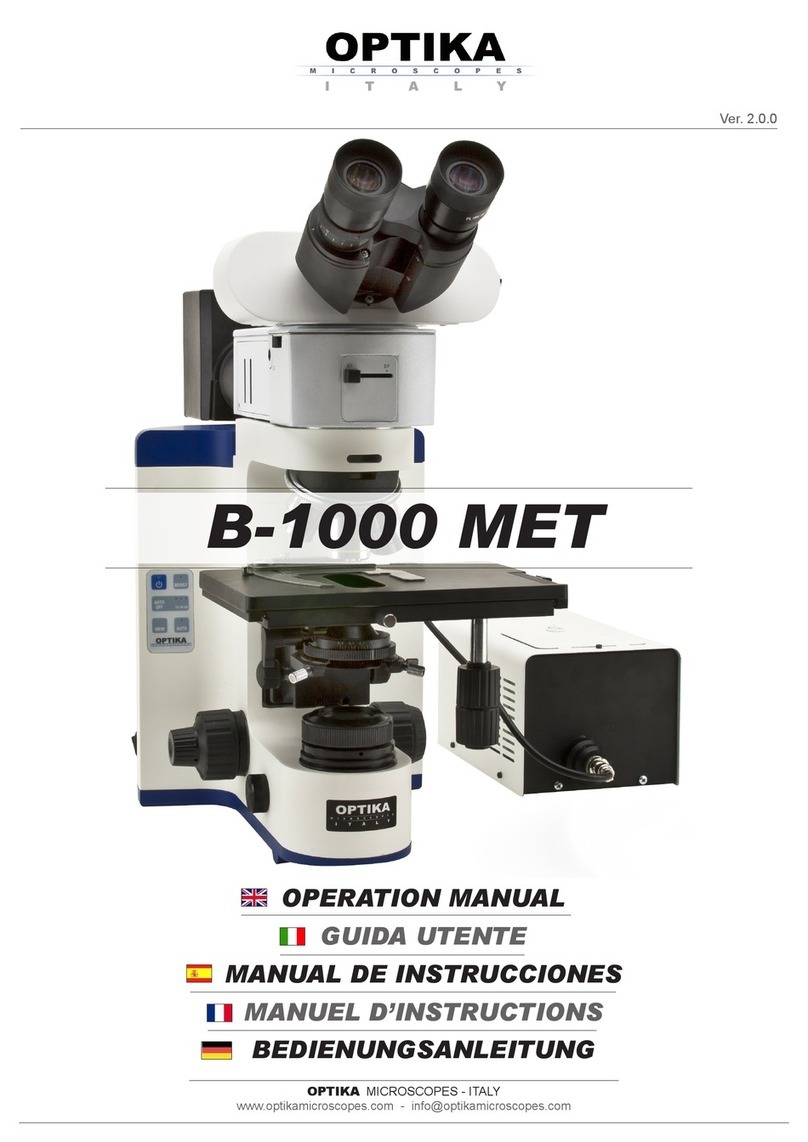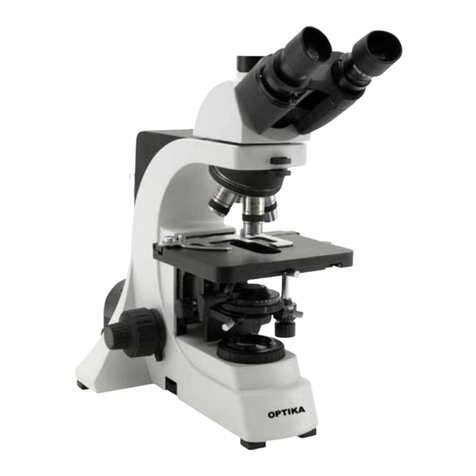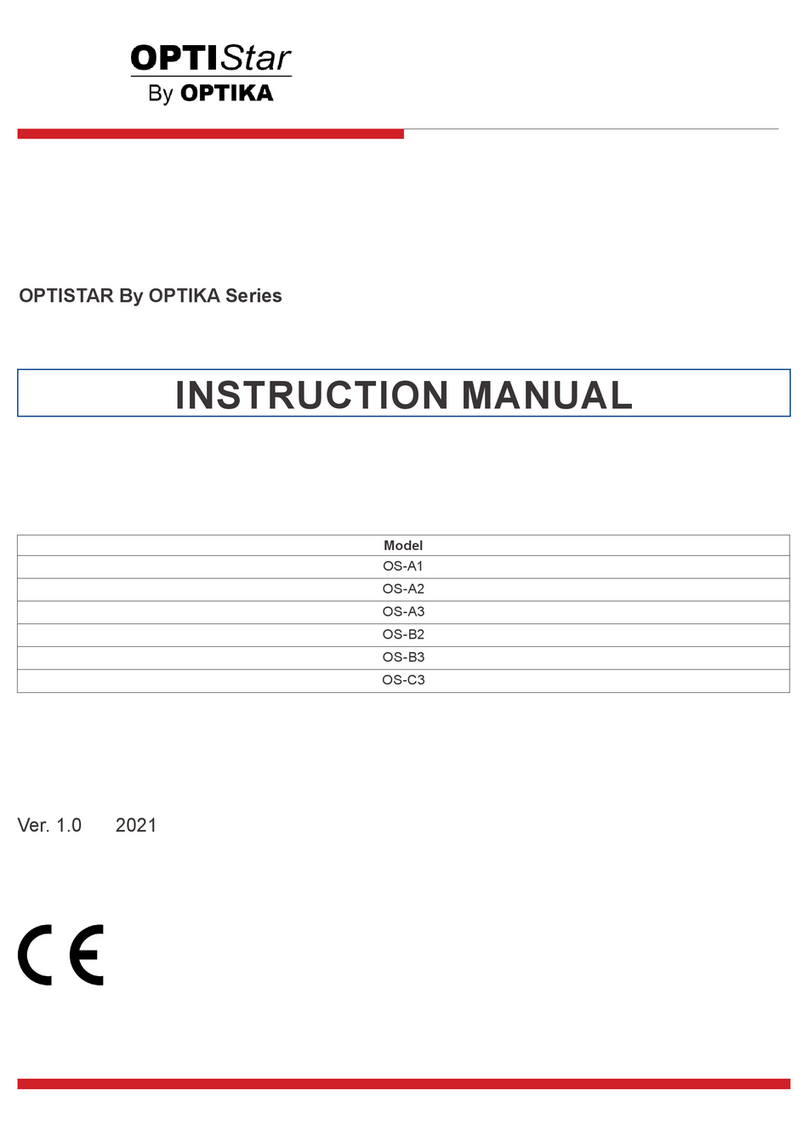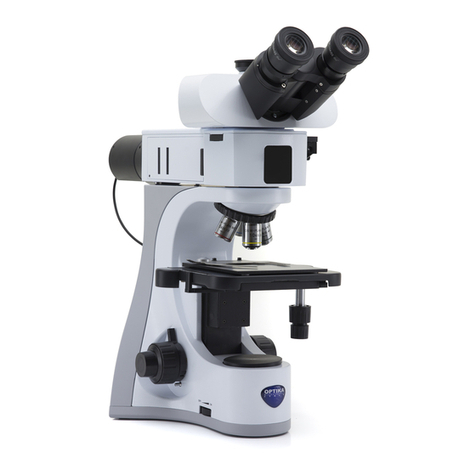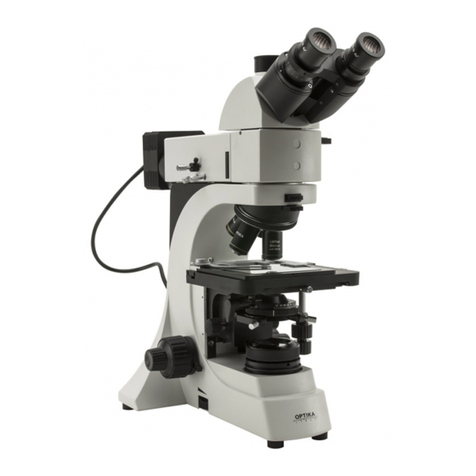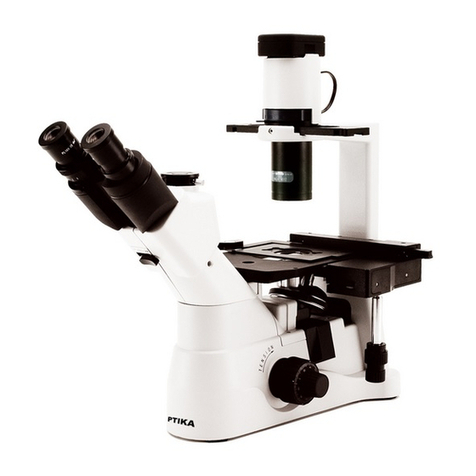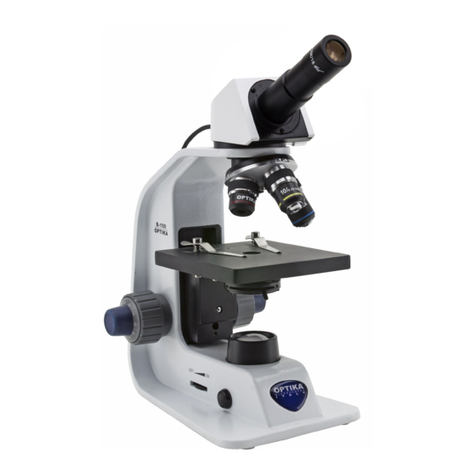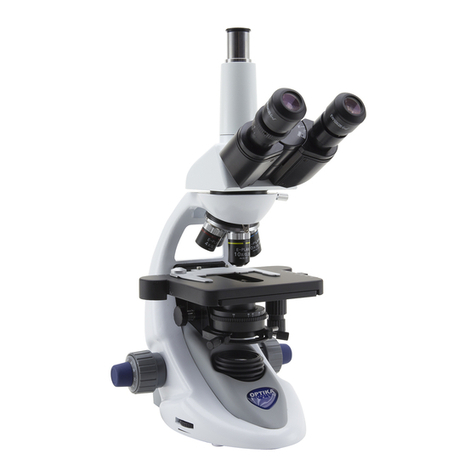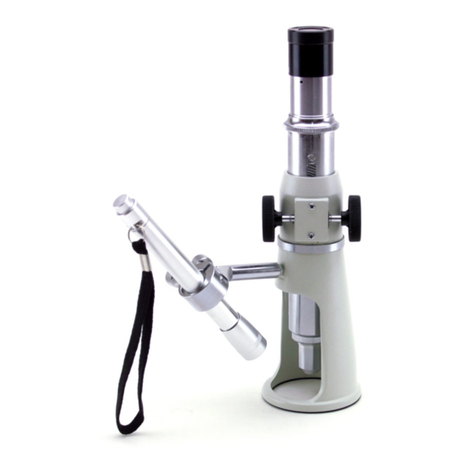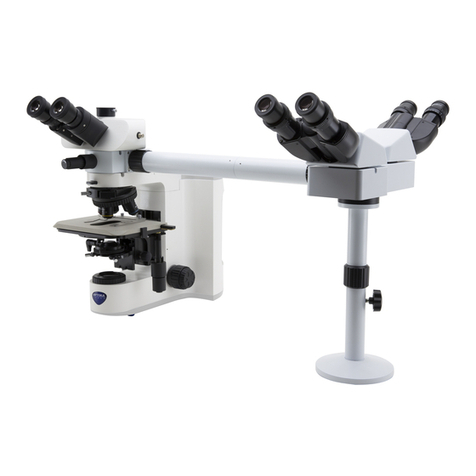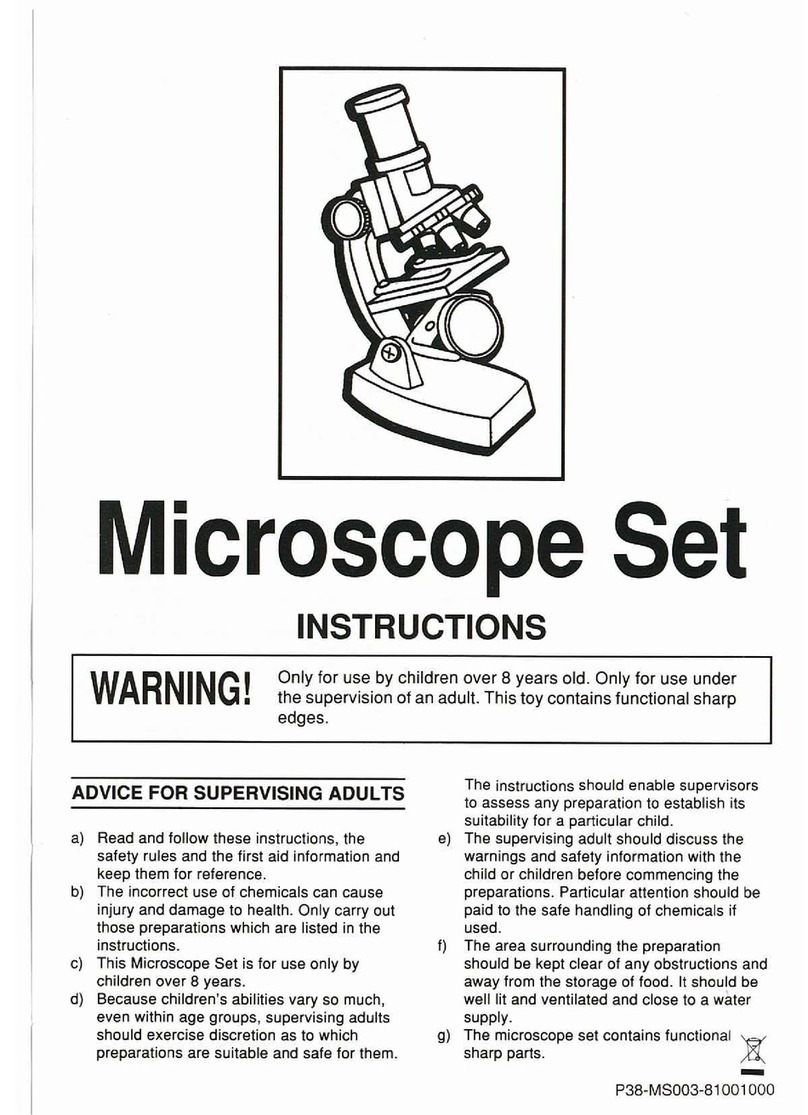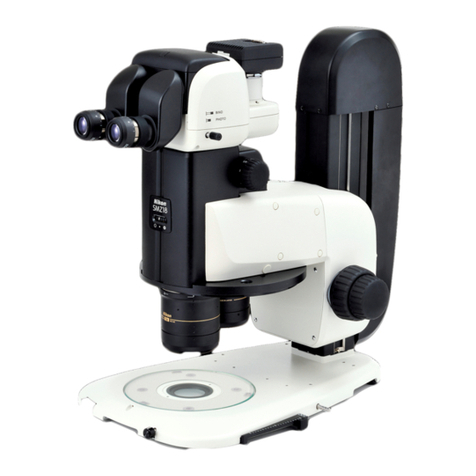Page 9
Oncepositionedandinstalledwiththenecessarycomponents,themicroscopeisreadytobeused.
Yourmicroscopeisalaboratoryinstrumentdesigned to last. Handle italwayscarefullyandavoid
abrupt vibrations or shocks.
Alwaysdisconnectthepowercablefromthemicroscopewhennotinuseforlongtime,whileyou
cleanitorwhenyouperformanymaintenance.
AVOID DISASSEMBLING THE INSTRUMENT
Donotdisassembletheinstrument.Thisentailsthecancellationofthewarrantyandmaycausemal-
function.
4.1 Observation head
Loosenthelock-screw(1),turntheobservationheadtoacomfortablepositionforobservation,and
thenlockthelock-screw.
4.2 Place the specimen on the stage
Lock the specimen slide on the mechanical stage using the slide clamp. Ensure that the spe¬cimen is
centred over the stage opening by adjusting the coaxial knobs of the stage.
4.3 Illumination system settings
ThemicroscopeisttedwithawhiteLEDilluminator.Beforeturningontheilluminationsystem,read
thesection5.3aboutelectricalsafetyprecautions.Inserttheplugofthecableintothepowersocket
andturnontheswitchonthebackofthemainbody.Turnthebrightnessadjustmentknobtoabright-
ness suitable for observation.
4.4 Adjust interpupillary distance
Holdtherightandleftpartsoftheobservationheadwithbothhandsandadjusttheinterpupil¬lary
distancebyturningthetwopartsuntilonecircleoflightcanbeseen.
Thewhitedot(°)placedontherighteyepieceshowsthesetinterpupillarydistance.Justremember
this value to help on later settings.
4.5 Focus tension adjustment
The tension of the coarse focusing knob is preset by factory. To change the tension according to your
preference,justrotatetheknob(5)clockwiseinordertoincreaseit.
Excessive tension could damage the mechanism of focus. A too loosed tension causes the descent
of the stage by gravity or a sudden loss of focus. In this case, rotate the knob (5) to increase the ten-
sion.
4.0 USING THE MICROSCOPE
